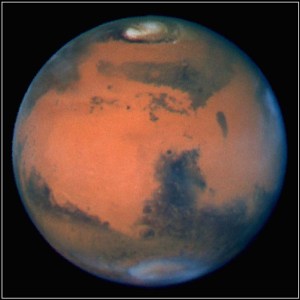A symbol for war and aggression for human tribes for thousands of years, fear and foreboding grew in the heart whenever a blood-red star, Mars (the Red Planet) appeared and moved across the night sky.

Space & Astronomy Wiki – the planets of the solar system –
With 11 percent of the mass and half the diameter of Earth, Mars is smaller than Venus and bigger than both Mercury and the Moon. A world of geological wonders, with ancient volcanoes dwarfing the biggest mountains on Earth, the Red Planet had warm and wet geological periods in the distant past.
The most studied of the nine planets besides Earth, Mars is the fourth planet from the Sun at an average distance of 142 million miles and is named after the Roman God of War.
Tuesday was Mars Day in ancient Babylonia, who first created the seven-day week because they believed on this day Mars influenced their lives. With two small moons called Phobos and Deimos, that look much more like asteroids from the Main Asteroid Belt, and a surface that looks Earth-like in photographs, the Red Planet is probably the best planet to terraform.
Mars has an atmosphere primarily composed of carbon dioxide, with a little water vapor, and not enough oxygen for you to breath. With a gravity field .375 of Earth’s and an average surface temperature of -81 degrees Celsius, it will take generations to make the Red Planet habitable for human life.
You can find out more about Mars here.
Read about the first Earth-sized planet found orbiting in its host star’s habitable zone.
Learn more about main sequence stars like our Sun.
Read about floating debris or waves space scientists see on the seas of Saturn’s moon Titan.

One thought on “Mars”